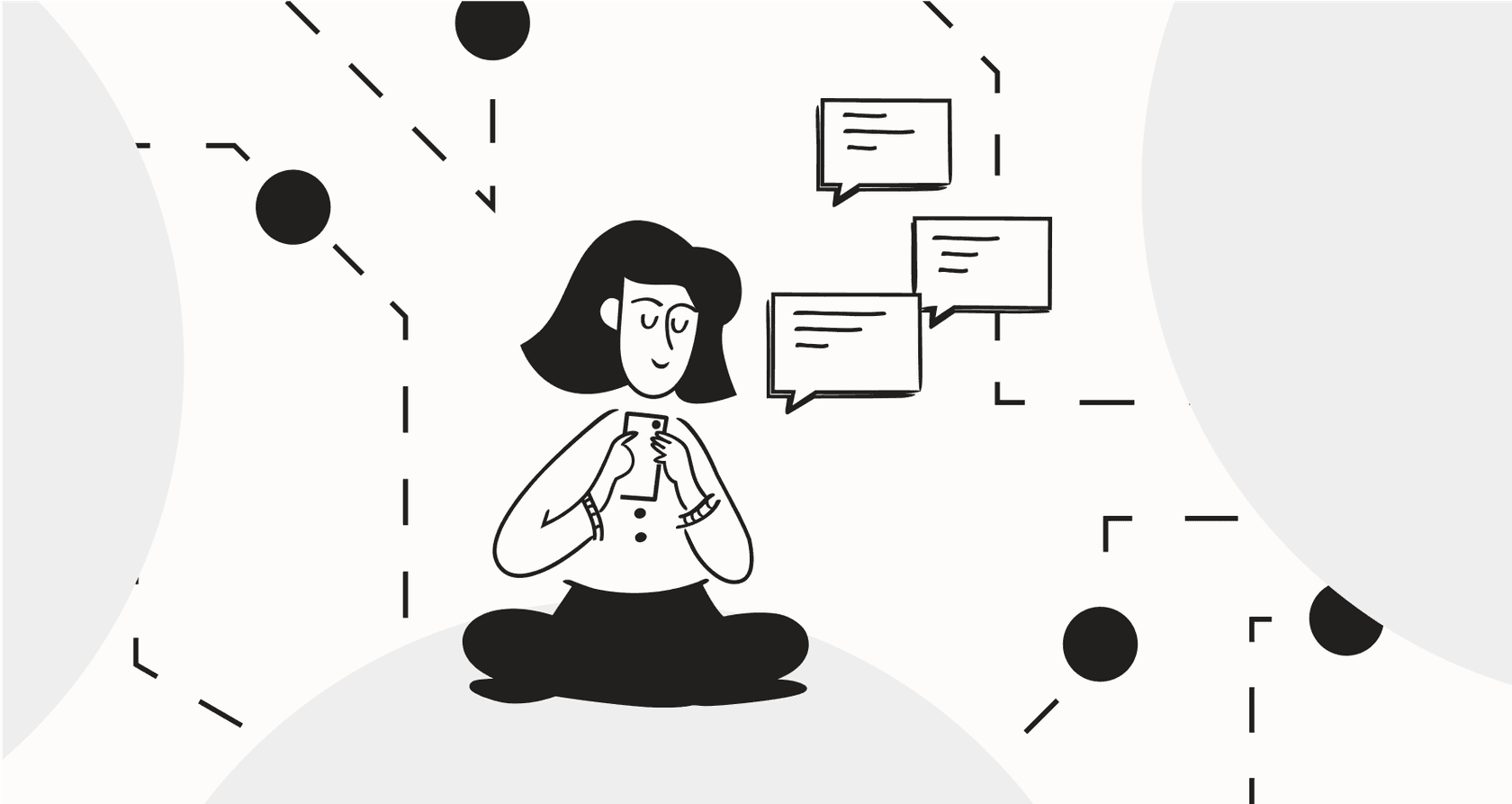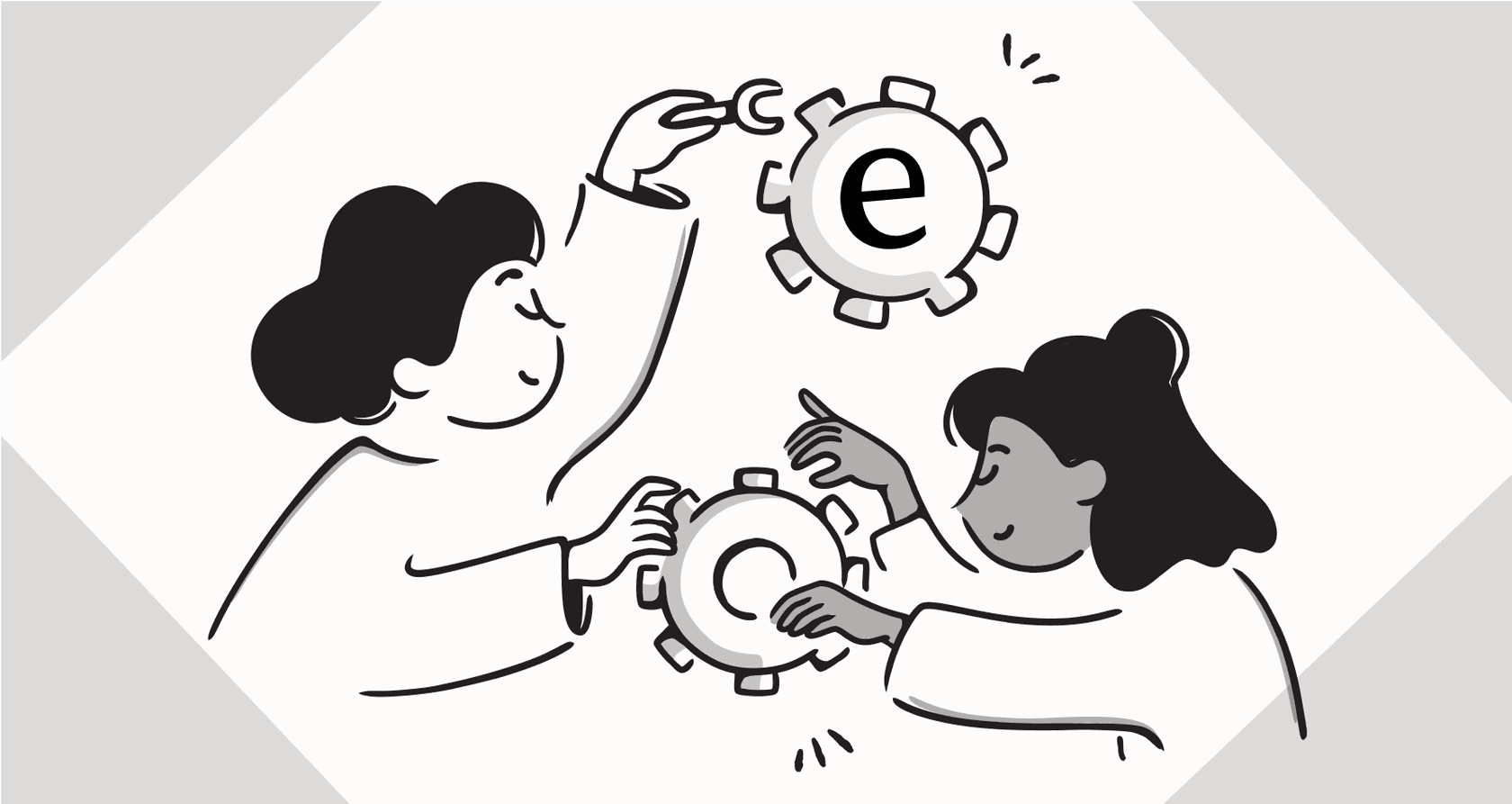
Imagine artificial intelligence that doesn't just follow a script but can actually figure things out on its own, working through multiple steps to reach a goal and learning as it goes. That's pretty much what autonomous AI agents are all about. They're a big step up from your basic chatbots or simple automation tools, capable of tackling complex tasks independently. They're starting to make a real difference for businesses looking to get more done, save some money, and let their teams focus on more important stuff, especially in busy areas like customer support.
This guide will walk you through what autonomous AI agents are, how they operate, why they're helpful (and what makes them tricky), and how businesses can start using this powerful technology.
What exactly are autonomous AI agents?
At its heart, an autonomous AI agents is an intelligent system designed to work independently to hit a specific target. Think of it as an AI with a mission. Unlike older software that just follows rigid, predefined rules, these agents can look at what's happening around them, make decisions, take action, and learn from the results, all without needing someone to watch over them constantly. They're a more advanced type of AI, able to run through a series of tasks and get better at what they do by teaching themselves. While all autonomous agents are technically AI agents, not all AI agents have this high level of independence and multi-step ability.
What makes them stand out? They can keep track of where they are in a process, figure out the best sequence of actions on the fly, use different tools (like connecting to databases or other software), and adjust their approach based on what happens in real time. They're particularly good at handling questions that aren't totally clear by breaking them down into smaller steps and trying things out until they get the job done.
How autonomous AI agents work
The way autonomous AI agents function usually involves a continuous cycle. This lets them interact with their environment and keep moving towards their goals. It's a combination of several smart technologies working together to let them operate on their own.
Here’s a simple look at that core cycle:
- Looking and gathering info: The agent starts by collecting data from its surroundings. This could be anything from a customer asking a question or checking past orders to pulling info from websites or internal company documents. Being able to access tools and remember past interactions is key here to really understand the situation.
- Thinking and deciding: Using tech like machine learning and natural language processing, the agent digs into the data it collected. It spots patterns, figures out what the user is trying to do, and plans the steps needed to achieve the objective. This means weighing up different actions and picking the best way forward.
- Taking action: Based on its decision, the agent does something. This could be answering a question, updating a record in a system, starting a process through another piece of software, or handing off a tricky issue to a human.
- Learning and adjusting: A really important part is their ability to learn. The agent uses feedback from its actions and any new data it gets to fine-tune its methods and do better next time. This ability to adapt means it can handle more types of tasks and situations over time.
This back-and-forth cycle is what lets autonomous agents work effectively even when things are changing. They're constantly tweaking their approach to get the result you want.
What can autonomous AI agents do? Key capabilities and use cases
The possibilities for autonomous AI agents are huge, stretching across tons of industries from finance and healthcare to retail and manufacturing. They can automate complex processes, analyze massive amounts of data, and interact with people in really smart ways.
One area where they're making a big splash is customer support. Here, autonomous AI agents can take on tasks that used to need a human touch, totally changing how businesses talk to their customers:
- Handling basic questions: They can instantly answer common, repetitive questions like FAQs, checking on orders, or resetting passwords. This frees up your human team.
- Smartly sorting and sending tickets: Agents can look at incoming support requests, figure out what the customer means and how they're feeling, and automatically send them to the right team or person, adding helpful tags along the way.
- Making interactions personal: By looking at a customer's past interactions and data, agents can give tailored suggestions and solutions, making the customer experience much better.
- Offering help before you even ask: They can sometimes predict what a customer might need, sending reminders or notifications before a problem even pops up.
- Supporting across different platforms: Autonomous agents can provide consistent, fast help whether a customer reaches out by email, chat, or social media.
- Actually doing things: They don't just give information. They can perform real actions, like grabbing order details straight from your e-commerce platform (like Shopify) or kicking off processes in other internal systems using custom connections.
Platforms like eesel AI are built specifically to create autonomous AI agents that can handle these kinds of tasks. eesel AI connects smoothly with helpdesks you might already use, like Zendesk, Intercom, and Freshdesk. This lets businesses add powerful autonomous capabilities right into their current way of working. You can find out more about how eesel AI works with platforms like Zendesk on our Zendesk integration page.
Autonomous agents vs. other AI: what's the difference?
It's tempting to just call all smart computer systems "AI," but autonomous AI agents are quite different from simpler forms. While a basic chatbot might just follow a simple "if you say this, I say that" rulebook, and robotic process automation (RPA) just runs through a fixed list of steps, autonomous agents have a much higher level of smarts and flexibility.
The main difference comes down to how independent they are and how they focus on a goal. Traditional AI agents or chatbots are often just reacting; they respond to specific things you input based on how they were programmed. They don't necessarily work towards a long-term objective or string together lots of different tasks on their own. RPA is great for automating repetitive, structured jobs, but it gets stuck when things are unclear or the situation changes in ways it wasn't expecting.
Autonomous AI agents, on the flip side, can grasp a bigger picture goal and break it down into smaller jobs. They can dynamically pick the right tools and actions to finish each step. If the situation changes or they find something unexpected, they can even change their plan. This makes them way more capable in complicated situations where a fixed script wouldn't work. Think of it like the difference between a simple answering machine (that's your chatbot/RPA) and a personal assistant who can manage your calendar, book flights, and handle emails based on what you're generally trying to achieve.
| Feature | Autonomous AI Agents | Traditional Chatbots | Robotic Process Automation (RPA) |
|---|---|---|---|
| Independence | High (decides and acts independently) | Low (follows predefined rules) | Low (follows fixed script) |
| Goal Orientation | Goal-oriented (works towards objective) | Reactive (responds to input) | Task-oriented (completes steps) |
| Flexibility | High (adapts to changing situations) | Low (rigid rules) | Low (gets stuck with changes) |
| Task Complexity | Handles complex, multi-step tasks | Handles simple, defined Q&A | Handles repetitive, structured tasks |
| Learning Ability | Learns and improves over time | Limited or no learning | No learning |
Different types of autonomous AI agents
Not all autonomous AI agents are the same. They come with varying levels of complexity and ability, designed for different kinds of jobs and environments. Understanding these types helps you see what they can potentially do.
Here are a few common kinds you might hear about:
- Reactive agents: These are the simplest. They just act based on what they see right now, without remembering anything or planning ahead. They react instantly to specific inputs.
- Model-based agents: These keep a kind of internal map of their environment. They use memories of past situations to help them decide how their actions might affect things in the future.
- Goal-based agents: These agents plan their actions specifically to reach certain objectives. They look at different strategies to find the most effective way to get there.
- Utility-based agents: Similar to goal-based, but they use a scoring system (a utility function) to weigh different outcomes. They choose actions that will give them the best results overall, balancing different trade-offs.
- Learning agents: These agents get better at what they do over time by learning from new data and experiences. They adjust their behavior based on feedback they receive.
- Hybrid agents: These mix parts of reactive agents (for quick responses) and planning agents (for working towards long-term goals). This lets them react fast while still keeping the main objective in mind.
- Hierarchical agents: These break down big tasks into smaller subtasks managed at different levels. This helps them handle really complex workflows more effectively.
- Multi-agent systems: This is when you have several agents working together. They communicate and team up to solve problems or achieve goals they share.
Choosing the right type of agent really depends on how complicated the task is and how predictable the environment is.
The benefits of using autonomous AI agents
Bringing autonomous AI agents into your business can unlock some pretty significant advantages if you're looking to streamline operations and improve how you interact with customers.
Here are some of the main upsides:
- Faster work and more efficiency: Agents can work around the clock, handling tasks instantly and many at once. This really speeds up response times and how quickly things get done.
- Saving money: By automating tasks that take up a lot of time and repetition, businesses can really cut down on operating costs and let their human staff focus on more valuable work.
- More accuracy and dependability: Automated processes mean fewer human mistakes, which leads to more consistent and correct results, especially when dealing with lots of data.
- Easy to grow: Autonomous agents can easily handle more or fewer tasks as your workload changes, without needing to hire more people. This makes them great for busy times like holiday seasons.
- Better customer experience: Getting faster, more personal replies and proactive help makes customers happier and more likely to stick around.
- Reducing risks: In areas like finance or security, agents can watch things in real time and predict potential issues to help avoid problems.
- Staying ahead: Using autonomous agents can show that your business is forward-thinking, opening up possibilities for new services and ways of operating.
Navigating the challenges and limitations
While the good stuff is clear, putting autonomous AI agents to work isn't always totally smooth sailing. Understanding the potential bumps in the road is really important for making sure your implementation goes well.
Here are a few things you might run into:
- Trouble with unclear or subtle meanings: Agents might struggle with questions that are really vague, situations involving complex emotions, or things that need deep, human-level thinking that goes beyond the data they learned from.
- They need good data: How well autonomous agents perform really depends on the quality of the data they're trained on and have access to. If the data is biased, incomplete, or wrong, it can lead to bad decisions and responses.
- They can be technically complex and need resources: Building, training, and keeping advanced autonomous agents running can require a lot of technical know-how and computing power, which can cost a fair bit.
- Ethical and security worries: Making sure customer data is private, preventing the agent from doing something unintended, and dealing with potential biases in how it makes decisions are all big concerns. This needs careful thought and oversight.
- Not very creative: Agents follow algorithms and patterns they've learned. They can't really invent or come up with truly new solutions outside of what they were programmed to do.
- Need ongoing care: Autonomous agents need to be watched, retrained, and updated regularly to keep working well as things change.
- Sometimes hard to understand: For really complex agents, it can be tough to figure out why they made a certain decision. People sometimes call this the "black box" problem.
Dealing with these challenges often comes down to picking the right technology partner and putting solid monitoring systems in place.
The future outlook for autonomous AI agents
Where are autonomous AI agents headed? It looks like they're going to get much smarter and become a more standard part of how businesses operate day-to-day. Experts think they'll become much more common, moving from just being talked about to being widely used within the next few years.
We'll probably see agents that can handle even more complicated tasks, with a better grasp of context and improved learning abilities. Having multiple agents work together on bigger goals (multi-agent systems) is also a trend that's picking up steam. While truly human-level AI (Artificial General Intelligence) is still a long-term goal, autonomous agents are definitely a step in that direction, helping people do more and changing how work gets done across industries.
Choosing the right autonomous AI solution for your support team
If you're thinking about how autonomous AI agents could change your customer support for the better, picking the right solution is super important. It's not just about grabbing a tool; it's about finding a partner that fits what you need, works with your current systems, and offers the control and ability to grow that you're looking for.
Think about things like:
- What specific tasks do you want the AI to handle automatically? (Like answering basic questions, sorting tickets, or getting customer info?)
- What helpdesk and internal tools are you using right now? (Making sure it connects smoothly is key!)
- What's your budget, and how does the pricing work? (Watch out for hidden fees!)
- How much control do you need over how the agent talks and how it handles different situations?
- How easy is it to get it set up, test it out, and keep an eye on how it's doing?
- Does the company selling the solution offer good support and help resources?
- Can the solution grow easily as your business gets bigger?
Looking at different platforms based on these points will help you figure out the best fit for your team.
Why eesel AI is a smart choice for building autonomous support agents
eesel AI is built specifically to give businesses effective autonomous AI agents for support. We aim to tackle many of the common difficulties and limitations you might find with other options. We connect smoothly with your existing helpdesk, like Zendesk, Intercom, or Freshdesk. This means you can add powerful AI capabilities without messing up your current way of working.
Here's what makes eesel AI stand out:
- It's cost-effective: We have transparent pricing based on how many interactions the AI handles, so you only pay for the help you actually use. This avoids the unpredictable costs you might see with fees per agent or confusing charges based on whether a ticket is "resolved," which is common with other platforms. You can see more details on our pricing page.
- Trains on everything: You can train your agents using all your company's knowledge sources, not just limited help center articles. This includes past support tickets, internal documents (like Google Docs or Confluence files), PDFs, external wikis, and over 100 other integrations. Training on all these sources means your agents give accurate, detailed answers that are based on your specific business knowledge.
- Lots of control and customization: You get really detailed control over how your agent sounds, its greetings, sign-offs, and overall behavior. You can set exactly how your agent responds and when it should pass something to a human, making sure it totally matches your brand's voice and support processes.
- Can take action and fit into workflows: Our agents can do more than just answer questions. They can perform real actions by connecting to other software using APIs. This means they can fetch order info from places like Shopify or start processes in your internal systems. They also handle passing things off to human agents smoothly, keeping all the context.
- Easy to set up and test thoroughly: Getting your eesel AI agent running is simple and quick. Importantly, you can test how it would respond to past support tickets and try out workflows extensively right in the dashboard before you make it live. This lowers the risk and lets you fine-tune how it works.
- Grows with you: eesel AI is designed to handle lots of interactions and scale up easily as your business grows. And remember, the cost doesn't increase just because you have more agents using it.
Whether you need a fully autonomous AI agents to take care of basic support questions or an AI Assistant (sometimes called a Copilot) to help your human agents write replies and find information, eesel AI gives you the tools for smarter, more efficient support automation.
Embracing the power of autonomous AI agents
autonomous AI agents are a pretty big step forward in artificial intelligence. They offer businesses the chance to become way more efficient, save money, and give customers a much better experience. By being able to look, decide, act, and learn on their own, these agents can automate complicated tasks that traditional AI systems just couldn't handle before.
While there are definitely things to figure out, like making sure the data is good, understanding why the agent made a certain decision, and handling the technical side, choosing the right approach and technology partner can make using autonomous agents totally doable and very effective. They're not some far-off idea anymore; they're practical tools that are already changing industries, especially in customer support.
Ready to see how autonomous AI agents could change your customer support? See the difference with eesel AI. You can start a free trial today (no credit card needed!) or book a demo to get a closer look at eesel AI in action.







